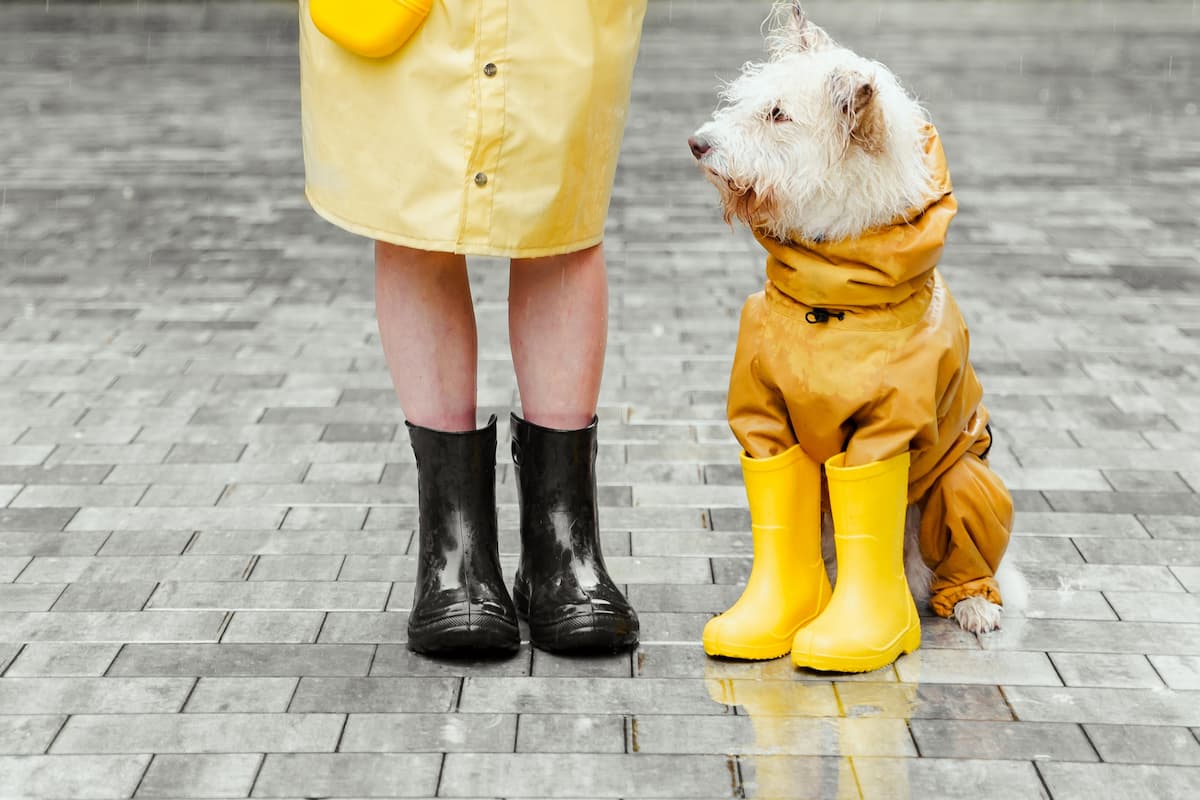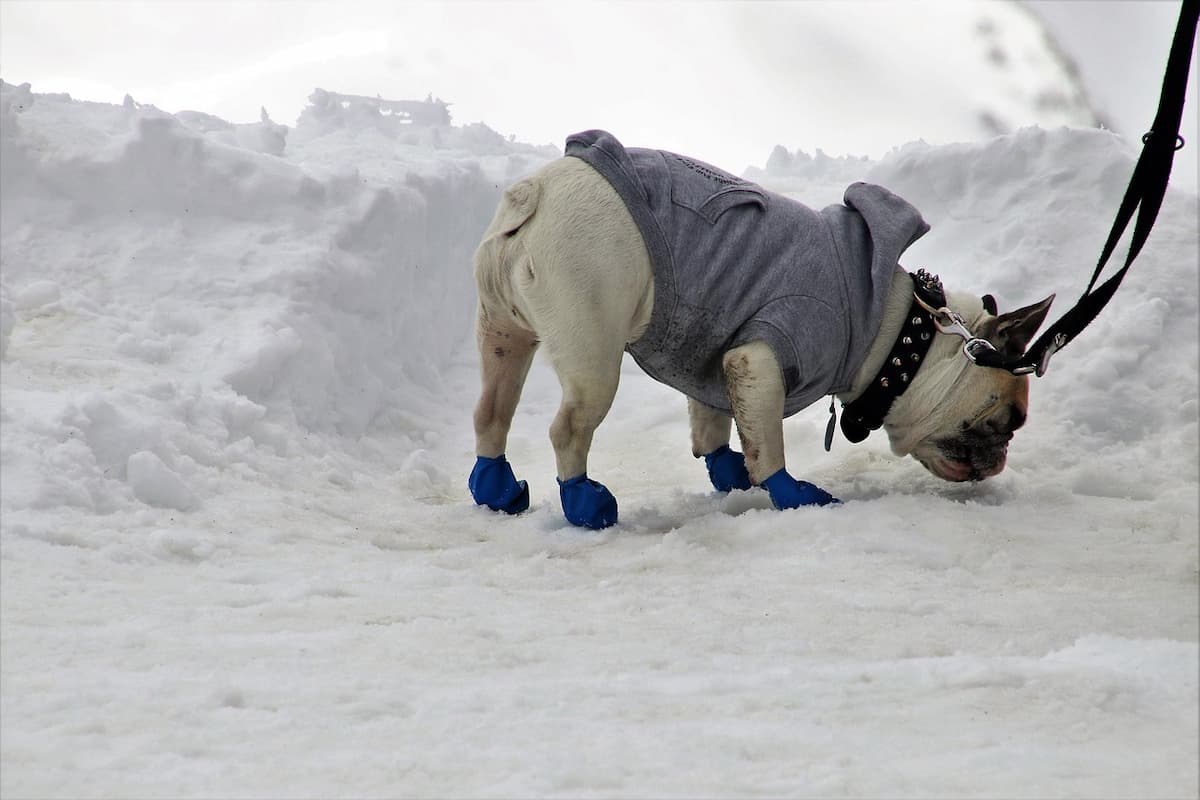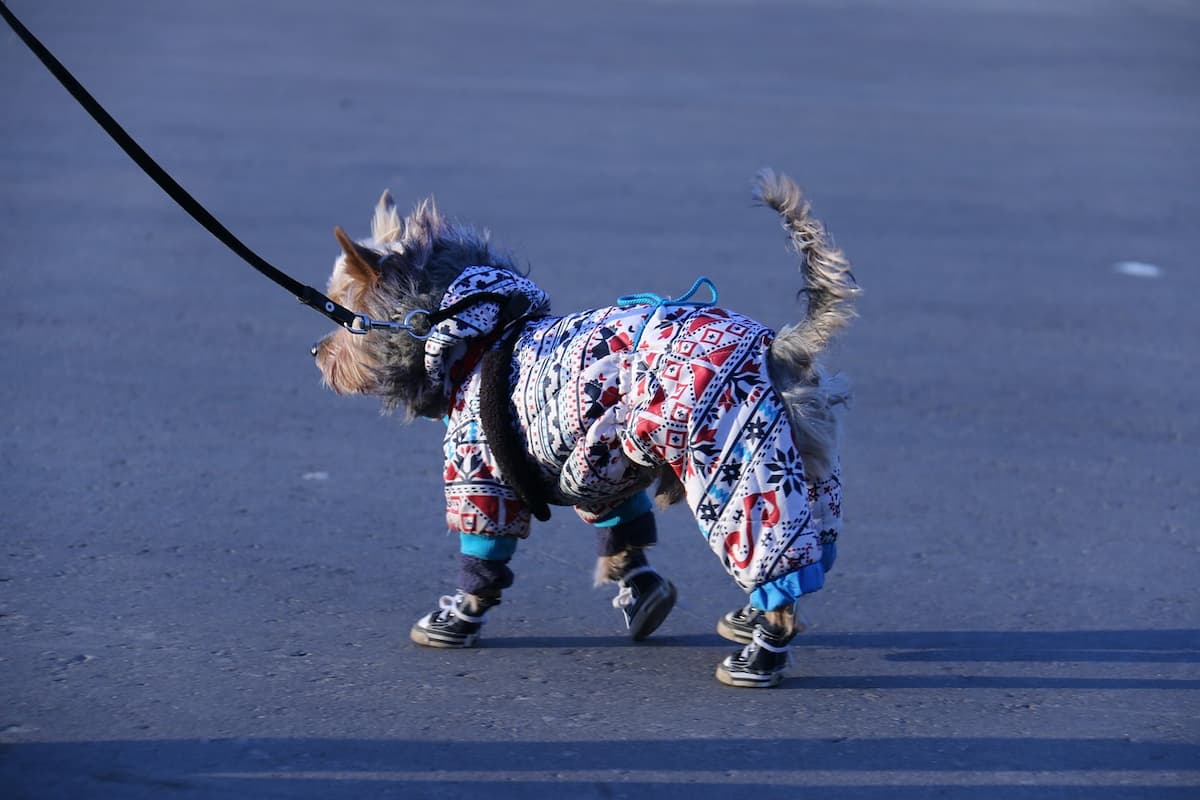Have you ever seen a dog strutting down the street, sporting a pair of fancy shoes?
It’s a sight that surely grabs your attention, making you wonder why on Earth a dog would need shoes in the first place.
It turns out our canine companions have their reasons, as this article will explain.
The Effect of Shoes on a Dog’s Natural Walking Mechanism
Have you ever wondered why dogs walk so awkwardly when they have shoes on?
It’s a sight that never fails to make us chuckle.
But behind their clumsy steps lies a fascinating phenomenon.
Let’s dive deeper into this intriguing topic and uncover the reasons behind their peculiar gait.
Dogs have a unique way of walking that is specifically designed to optimize their energy efficiency and mobility.
When they walk barefoot, their paws interact with the ground in a precise and intricate manner, allowing them to evenly distribute their weight and maintain stability.
However, when you slip shoes onto their paws, you disrupt this delicate balance, resulting in a noticeable change in their stride.
So, why exactly do dogs walk so weird with shoes on?
Here are a few key factors:
Lack of sensory feedback: Dogs rely heavily on the sensations they feel through their paws to navigate their surroundings.
Shoes act as a barrier between their paws and the ground, hindering their ability to gather important sensory information.
As a result, they may struggle with their footing and appear less sure-footed.
Altered mechanics: Dogs naturally flex their paws and utilize their claws to grip the ground, enhancing their stability and providing traction.
Shoes limit their ability to flex and extend their paws, altering their natural walking mechanics.
This can make their steps appear clumsy and awkward, as they try to compensate for the lack of flexibility.
Uneven weight distribution: When dogs walk without shoes, they instinctively adjust their gait to distribute their weight evenly across all four paws.
However, the addition of shoes throws off their weight distribution, making it difficult for them to maintain their usual balance and coordination.
This can result in a wobbly and uncoordinated walking motion.
Discomfort: For dogs, wearing shoes is an uncomfortable experience.
Can you imagine how it feels to have your sensitive paws trapped inside something tight and restrictive?
It’s like wearing a pair of ill-fitting shoes that squeeze and rub in all the wrong places.
Dogs may struggle to find their natural stride because the shoes hinder their flexibility and natural movements.
Tips to Help Your Dog Walk Comfortably with Shoes On
Although it may seem comical to see dogs walk weirdly with shoes, it’s important to remember that their natural walking mechanism is being disrupted.
This is why it’s crucial to choose the right shoes for your furry friend, ensuring they are comfortable, well-fitted, and allow for natural movement.
Firstly, give your pup some time to get accustomed to the sensation of wearing shoes.
Start by having them wear the shoes for short periods indoors before taking them outside for a walk.
Secondly, check if your dog’s shoes are a proper fit.
Just like humans, dogs come in all shapes and sizes, so finding the right fit is crucial.
Measure your dog’s paws and consult the shoe size chart to ensure you get the perfect fit.
Shoes that are too tight can cause discomfort and restrict movement, while shoes that are too loose may slip off or cause your dog to trip.
It’s also important to adjust the straps or laces of the shoes securely to prevent any discomfort or accidents.
Lastly, when introducing your dog to shoes, it’s essential to make the experience positive and enjoyable.
Start by associating the shoes with something positive, like treats or playtime.
Reward your pet with treats and praise each time they put on their shoes or take a few steps in them.
Gradually increase the length of time your dog wears the shoes and the distance they walk in them.
By using positive reinforcement and turning shoe time into a fun activity, your dog will become more comfortable and confident with shoes on their paws.
Remember, patience is key when helping your dog walk comfortably with shoes on.
Every dog is different, so it may take some time for your furry friend to adjust.
With a correct fit, positive reinforcement, and gradual introduction, soon your pup will be strutting their stuff in their stylish shoes!
FAQ
Q: So, first off, why do people actually put shoes on their dogs in the first place?
A: Great question!
People have various reasons for decking out their pooches in shoes.
Some pet owners use shoes to protect their dogs’ paws from hot pavements during scorching summers or icy surfaces in the winter.
Shoes also work wonders in shielding paws from sharp objects, chemicals, or even allergens.
Q: That makes sense, but why do dogs walk oddly when wearing shoes?
A: Ah, the walking weird part!
It’s mainly because dogs are not used to having anything strapped onto their paws.
We humans are familiar with wearing shoes, but for our furry friends, it’s an entirely new experience.
At first, they may feel a bit off balance or unsure of their steps.
Q: Is there anything else that causes this peculiar gait?
A: Absolutely!
Dogs rely a lot on the nerve receptors in their paws to feel the ground beneath them.
These incredible senses help them navigate surfaces efficiently.
When they wear shoes, these receptors are covered, which disrupts their usual tactile perception.
This lack of sensation can contribute to their unsteady walk.
Q: Does it mean dogs find it distressing to wear shoes?
A: Not necessarily distressing, but it can definitely be a strange sensation for them.
Dogs are naturally adaptable creatures, so they usually adjust to wearing shoes quite quickly.
With a bit of practice, they learn how to adapt their walk and regain their usual balance.
Q: Are there any specific tips to help dogs walk comfortably with shoes?
A: Absolutely!
Gradual training is key here.
Start by introducing your dog to shoes in a calm and positive environment, allowing them time to get used to the sensation.
Begin with shorter walks and gradually increase the duration.
Another tip is to choose shoes that fit properly, so they’re not too tight or loose.
This way, your furry friend will have an easier time adjusting to their newfound fashion.
Q: Are all dogs able to adjust to wearing shoes?
A: While most dogs can adapt to wearing shoes, some may find it more difficult or uncomfortable than others.
It depends on the individual dog’s personality, age, and past experiences.
Patience and positive reinforcement are crucial in helping your pup get accustomed to shoes.
Q: What else something important that we should know about dogs and shoes?
A: Remember that not all dogs necessarily need shoes.
In many cases, their paws are perfectly equipped to handle various terrains without any discomfort.
However, if you do decide to put shoes on your four-legged friend, always monitor them closely during walks to ensure the shoes aren’t causing any issues or discomfort.
Essential Part to Remember
While dogs might look oh-so-adorable in their little booties, it takes some serious getting used to for them.
Just like us humans, they need time to adjust to this strange new sensation on their paws.
We’ve seen how some dogs become instant fashionistas, strutting their stuff with confidence and grace in their footwear.
But for others, it’s a whole different story.
Imagine trying to walk on marshmallows or balancing on high heels without any prior experience – it’s bound to be a challenge!
Nonetheless, we shouldn’t discourage our furry friends from experiencing the world in their very own cute shoes.
They might stumble and trip at first, but with patience, practice, and lots of treats, they can become paw-some shoe-wearing pros.
So, the next time you see a dog rocking some fancy footwear, don’t forget to appreciate the effort and courage it takes for them to walk in those shoes.
And who knows, maybe one day they’ll even start a trend with their unique and adorable strut.












